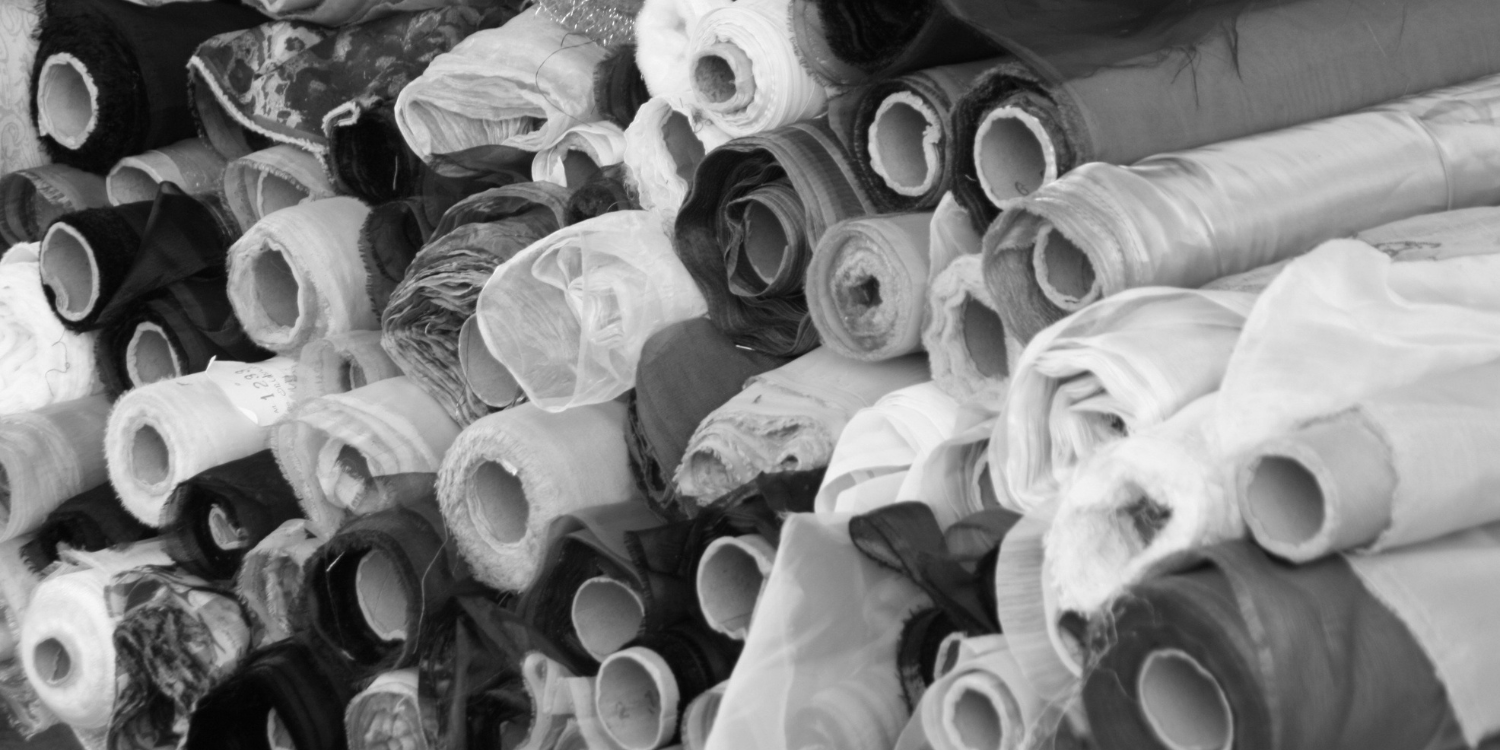
The Sustainable Textiles Glossary
If you look at most clothing labels today, the often long or complicated sounding textiles listed can be more than a little confusing. With the fashion industry currently contributing to 3% of all global carbon emissions, there’s really no better time to learn more about what makes our clothes and how we can make better decisions when buying them. The rise of the ‘slow fashion’ movement as well as brands (like True Tribe) who have committed to using recycled plastics and other sustainable materials is making a stand against fashion’s carbon footprint, however, in order to support these brands, you need to be able to understand and recognise what’s on the label.
For years, cotton was heralded as the benchmark for sustainable fashion. Big label brands created sections in their stores dedicated to more sustainable products that most of the time were made from cotton and linens. What many don’t know is that cotton production is actually very harmful for the environment in more than one way. The two biggest issues are namely the use of pesticides in cotton farms, which account for over half of all agricultural pesticide use in the developed world, and secondly, the sheer amount of irrigation required to grow the cotton plants.
In order to shop more responsibly, not only do we need to invest in better made products that last, but also educate ourselves on the markers of a sustainable item: the textiles and techniques used to make it. Navigating this world can be murky and overwhelming, so we’ve put together an introductory glossary of some textiles you may not have heard of, to look out for when shopping for sustainable piece of mind.
Chitin Fiber
Made from a blend of viscose and an unusual substance found in the shells of crustaceans, chitin is both naturally anti-bacterial and hypo-allergenic. Not only is chitin fully biodegradable (a huge problem in the textiles industry), but because the fibres are a by-product of the food industry, no shellfish are harmed solely for this purpose.
Coir
If you see ‘made from coir’ on a label, let your mind wander to a desert island paradise. Sourced from coconut husks, coir is the ultimate beach holiday material for baskets, bags and home interiors. With baskets and weaved bags continuing to prove popular for exotic holiday wardrobes, let coir tick both your fashion and sustainability boxes.
Cork
While cork is not a new material, it’s increasing popularity can be put down to it’s durable and diverse properties. Harvested from the cork oak tree, this changeable material can be made into warm, breathable and soft activewear, shoes and bags with ease. What’s more, raw cork can actually be harvested without having to cut down any trees. If that’s not a sustainable fibre, we don’t know what is.
Hemp
A long-favoured material in alternative circles, hemp is now being welcomed into the mainstream fold. Cultivated from the stalks of the hemp plant, it doesn’t require pesticides to keep harvests healthy and yields up to three times as much fibre as cotton. With breathable, warm and durable qualities all being checked, look out for T-shirts made from hemp on its own or blended with organic cotton.
Kenaf
Used by the ancient Egyptians, kenaf is a fiber that lends itself very well to apparel production. Related to cotton, it displays all the same properties yet requires much less water and no fertilizers to grow. The longer fibres create a super-soft and plush material that can be used to make everything from cushions to clothes.
Modal
Leading the way in sustainability on a budget, modal is fast becoming more and more accessible in big brand stores. Made from cellulose found in beech tree fiber, modal requires very few chemicals to make while being resistant to shrinkage and being easy to dye. The super-soft finish and ease of colouring means that you’ll most likely find it in trend-led fashion pieces.
Organic Cotton
Unlike non-organic cotton, this sustainable material takes much, much longer to make under the watchful eye of skilled experts. Organic cotton is grown using non GMO seeds and without the use of herbicides, pesticides or any synthetic chemicals. This greener, slower method, eliminates many of the environmental issues associated with growing regular cotton, however the price of going organic reflects the extra care needed to reduce environmental impact.
Recycled Polyester
We might be biased but recycled polyester is one of the more exciting sustainable materials available to buy today. Made from recycled plastics (often water bottles, food containers and textiles), this ultra-sustainable material not only can be used to create everything from sportswear to luxury goods (you can browse some of our recycled polyester collection here), but it also removes items destined for landfill from the fashion food chain.
Tencel / Lyocell
One of a growing number of biosynthetic fabrics, tencel is sourced from the beautiful eucalyptus tree. You may see labels refer to either tencel or lyocell as both are correct terms (lyocell was the original name for the textile but was changed by the company tencel when they took over all production). Almost all the water used in the cultivation process can be reused which is a big win for sustainability. Look out for this wonder-warn in everything from underwear to denim.


Leave a comment
This site is protected by hCaptcha and the hCaptcha Privacy Policy and Terms of Service apply.